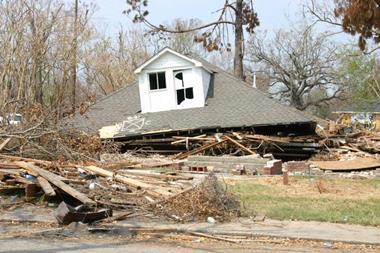Insurers need to strike a fine balance between compassion and efficiency over the next few months, as the aftermath of the recent floods takes its toll.
While it is important to deal with immediate concerns, such as providing householders with appropriate alternative accommodation, robust systems to guard against fraudulent claims need to be put in place quickly.
Many insurers may face significant increases in the number and scope of fraudulent claims over the next few months. Research shows that 48% of people would not rule out making a fraudulent insurance claim in the future, and recent flooding gives people a great opportunity to do so.
While insurers need to be sensitive at a time when some families are facing trauma and loss, recent catastrophes in the Midlands, Wales and the North of England will inevitably create opportunities for those on the ‘make’.
Indeed insurers should be especially wary of ‘me too’ claims, where opportunists who have previously had flood damage, or know someone who has been affected, create their own crises. Insurers would be well advised to keep an eye open for the opportunist who puts a running hosepipe into their unloved car, with a view to claiming for ‘flood’ damage later.
There is also a need to watch out for un-tenanted, poorly maintained buildings that may be prime targets for spurious flood dam-age cases. In these cases, insurers need to use all the prior information and intelligence they have and be prepared to defend cases vigorously.
Inevitably, insurers will need to relax stand-ard controls in this area to cope with the sheer volume of claims. However, this does not mean that the door should be left open to fraudsters. It’s really a matter of good plan-ning and prioritisation in a few key areas.
Insurers should adopt the following best practice to reduce fraudulent claims:
• Keep existing claims processes where possible – take the opportunity to review quickly current processes and keep in place what you can
• Retain control over repair authorisation – this is a key area where tradesmen and fraudsters can collude to inflate prices and pocket their winnings
• Check completed work wherever possible and ensure both parties – tradesmen and insured parties know this. It’s good practice to remain in control as it sends a strong message that you mean business and won’t be taken for a ride
• Re-engineer your processes to focus on suspect claims as soon as they become apparent. Typically, this means confirming the claimant’s details; utilising CIFAS and other industry shared databases to identify fraudsters and looking out for Insurance Fraud Bureau operations and Insurance Fraud Investigators Group warnings. IT
Simon Robinson is an insurance partner at Browne Jacobson
Hosted by comedian and actor Tom Allen, 34 Gold, 23 Silver and 22 Bronze awards were handed out across an amazing 34 categories recognising brilliance and innovation right across the breadth of UK general insurance.











































